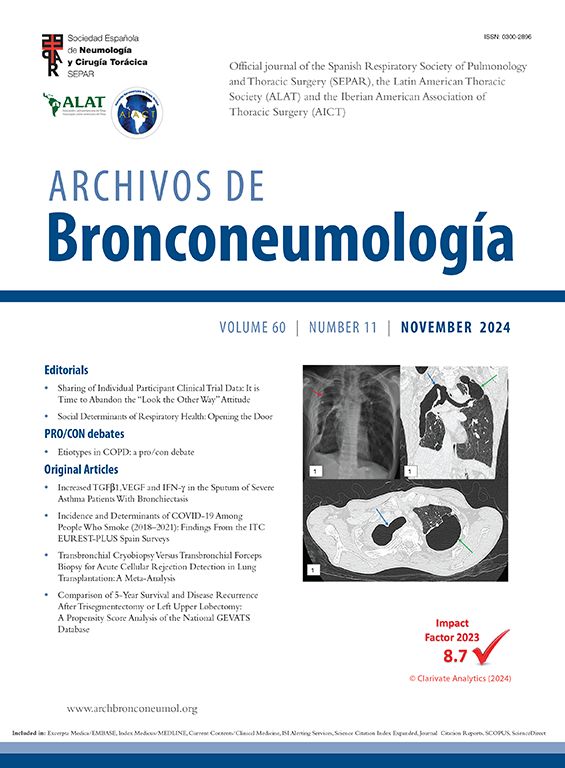An 86-year-old woman with dyspnea was diagnosed with a paramediastinal opacity on a chest radiograph. A thoracic computed tomography (CT) demonstrated a right pleural-based lesion encircling the thoracic vertebrae and extending to the left paravertebral area (Fig. 1A). There were no enlarged lymph nodes or signs of bone/chest wall invasion, but bilateral pulmonary nodules were detected (Fig. 1B). A whole-body fluorine-18 fluorodeoxyglucose positron emission tomography/CT (FDG-PET/CT) showed a markedly increased FDG uptake by the pleural-based mass and the lung nodules (Fig. 1C). A CT-guided biopsy of the pleural-based mass (Fig. 1D) was performed and confirmed a spindle cell proliferation with infiltration of lymphocytes and plasma cells, consistent with an inflammatory myofibroblastic tumor (IMT, Fig. 1E). The patient responded well to corticosteroids (Fig. 1F, G).
(A) Axial thoracic CT image (mediastinal window) shows a pleural-based perivertebral lesion (arrows). (B) Coronal thoracic CT maximum intensity projection image (lung window) demonstrates bilateral lung nodules (arrows), consistent with metastases. (C) Axial fused PET/CT image shows an FDG-avid pleural-based perivertebral mass (arrows). (D) Axial thoracic CT image (mediastinal window) with the patient in the prone position shows the percutaneous CT-guided biopsy procedure (arrows) of the pleural-based lesion. (E) Histological examination (hematoxylin–eosin staining) shows a spindle cell proliferation with infiltration of lymphocytes and plasma cells. (F) and (G) Follow-up axial (F) (mediastinal window) and coronal (G) maximum intensity projection (lung window) CT images performed 12 weeks after the administration of corticosteroids shows marked improvement of the pleural based lesion (arrows) and resolution of the lung nodules.
IMT is an uncommon benign neoplasm that rarely metastasizes and that typically affects children and young adults. IMT most commonly involves the lungs, but can also occur in the mesentery, retroperitoneum, pelvis, and extremities.1 Pleural involvement is extremely rare and has only been described in very few cases.2 We believe that our case in interesting for several reasons: first, the advanced age of the patient; second, the pleural location of the IMT; and third, the presence of lung metastases.
Conflict of interestsThe authors state that they have no conflict of interests.












